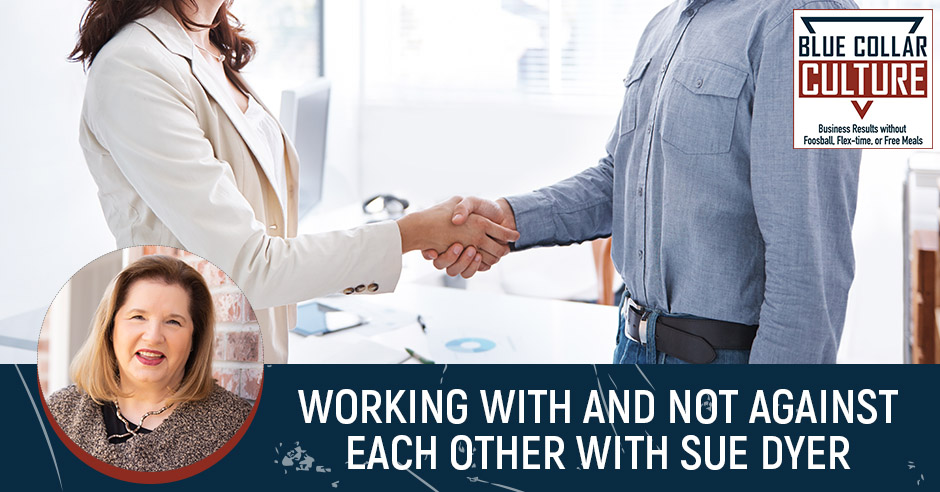
Did you know that construction is the only industry in the United States that, for 53 years, has decreased in productivity points every year? That is happening because they tend not to depend on one another. Construction needs to be built in a high-trust environment if you want success.
Join Ryan Englin as he talks to the author of the #2 Wall Street Journal Bestselling Book, The Trusted Leader, Sue Dyer. Sue is also the host of the Lead With Trust podcast, where she talks about high trust equals high performance. Learn why a trusting environment is crucial for success, especially in construction. Find out how you can change your mindset if you are afraid and don’t trust your team. Know that it only takes one individual to change the whole environment.
—
Working With And Not Against Each Other With Sue Dyer
My guest is no stranger to the construction industry. She has been around for quite a while and made a huge impact in her ability to help teams put together very successful projects. In fact, some of the stories that she’ll be able to share with you sound impossible. I don’t know how else to say it, but it’s impossible. It’s amazing what happens when teams trust each other. They come together and collaborate in a way that is creative. They’re able to achieve impossible results.
Sue Dyer has been around in the construction industry for quite a while. In fact, she has been doing it for so long that she has a ton of research and data about why this works. Her expertise is in helping teams trust each other. As much as we want to think that construction is all about how fast we can build, how cheap we can build it, and how much profit we can make, there’s so much more that goes into it. Her Trusted Leader Program is going to transform construction companies all over the country. I’m so excited to have Sue here to share her insight about what it takes to build these high-performing teams.
—
Sue, I am excited to have you here. Welcome to the show.
Thanks so much, Ryan. I’m excited to be here.
We haven’t known each other that long, but I feel like we have because we have so much in common with the people we serve, our passion for the industry, and making sure that we’re out there helping construction company owners solve some of their biggest challenges. Let me ask you this. One of my favorite questions to ask is, what is the biggest myth about your industry and the work that you do?
I believe that the biggest myth that is out there is that we believe as construction leaders, whether you’re at a project level or a business level, that somehow, we can have fear and still be successful. The fear leads projects to fight with each other, holding our cards close to the vest, and not sharing completely, especially on low-bid projects. That is because they aren’t going to share what they have in their pocket that is trying to make it work.
The owner isn’t sharing what they have in their pocket to try to make it work for them. The designer is going, “You’re messing up my design.” We think that all this fear is somehow going to protect us when, in fact, it ends up completely undermining our ability to succeed. It ends up being a loss. We could be so much more successful if we could create a high-trust environment.
I have been on this road and this path for a long time. For many years, I have been working in construction and doing experiments to see what it takes to create a high-trust, high-performing team, whether it’s a business team or a project team. That’s where I came to create my Trusted Leader Continuum where there’s a continuum of leadership.
On one side is fear, which has been the tradition in construction for about a hundred years. We teach our folks there to drive the crew, make it happen, get production, and get going. That has been our norm for many years. I believe we have to move on to the other side of the continuum where it is more collaborative and based on high trust. Let me tell you why. If we go through the continuum, I’m on a project with someone who is a benevolent dictator.
I have sat in construction offices where you’re not there for more than maybe five minutes. You realize, “On this place, I better do what I’m told because if I don’t, punishment will be involved.” People don’t want to be punished, so they do what they’re told. I got hired because I’m seasoned. I’m an expert in my area. I’m the best of the best at what I do. They hired me for my expertise. I feel as though I’m being treated in a way that I’m being forced to do things that I don’t think are necessarily the best things. Maybe I don’t believe it’s the best way to operate on our project or the best decision, but it’s my job, so I do it.
It’s interesting how you position that. It’s almost this vicious cycle that we get into. As you’re describing it, I’m not seeing anything, but I’m picturing in my head that you have this owner or leader who is like, “I can’t trust him anyways, so I’m going to act in a way that’s consistent with that.” The employee sitting there is like, “I can’t trust him. Maybe he’s lying to me. I’m going to act in a way that’s consistent with that.” We get into this vicious cycle of nobody trusting anybody. They think that because we’re operating this way and it’s the way we’ve operated for hundred years that that’s the only way to operate.
Not only that, it’s so contagious. I’m a seasoned professional and I have people working for me. How do I treat them? It is the same way. Coercion becomes the norm. What happens is it looks like everything settles in and we are working well together, but it’s just compliance. We’re complying. I’m like, “You do this.” You’re like, “Okay.” I’m like, “You do that.” You’re like, “What do you want me to do?” People wait until you give them the next order.
When a big project issue comes up, the team sees it. They’re smart. They’ve probably been through it before in another project or something in your business, but no one says anything. No one steps up and works to solve the problem. That leads to the failure of so many projects and complete businesses wiped out. We looked at nineteen forensic studies of construction. Forensic studies only happen when they’re deemed a big failure. What we found is that 100% of the time, this is what happened. It was not a big technical problem. It was the team that didn’t step up, share, talk, or solve.
The foundation of that is this fear and lack of trust. Why do you find that this is perpetuated in the industry? What do you think is going to people’s minds outside of habit that keeps this being something that you have to deal with?
There are many things, but one of the things that come to my mind first is we are ignorant and in denial that we are interdependent. On every construction project, every person that is working there, whether they are a fourth-tier sub, a general contractor, a designer who’s not quite as much involved anymore but still integral, or certainly, the owner’s team including the construction manager, are interdependent. They can’t succeed without the help of each other. Yet, we act as if we are all interdependent little silos doing our own work. Especially, you see that in the trades where they put in the contract self-organized. That means, “Get your pipe out of my way.”
We are ignorant and in denial that we are interdependent. We can't succeed without the help of each other. Click To TweetI saw a picture where someone put a pipe through a ladder. They installed the pipe through a ladder. It is about knowing that we are interdependent and we’re in this together. It’s been a tradition over the years to be protecting or policing and protect our own interests. I try to make sure that what I bid at bid time, I get out of the project. It’s like, “I am full speed ahead. Get out of my way. I’m going ahead,” not realizing that it is a dance. If you work together, you could go faster.
I hear you talking about this from the perspective of project management and getting the contractors and the teams to work together well. I see this a lot in hiring problems as well. People work for one of these little toxic cultures where we rule through fear. It’s all about the stick mentality of, “Do this or else.” They come up and then they go get another job because they can’t stand it anymore and they find out that the company is the exact same way. They go do it again and the next company is the exact same way. All of a sudden, these people don’t want to do this kind of work anymore.
In the industry, that’s a big problem. Not only that, you don’t make as much money. You aren’t as successful. It costs the owners a delta of somewhere between 10% and 50% extra. It costs the contractors the ability to know that they can succeed with what they have been doing. It’s not predictable, which is what I’ve been working on for many years.
I try to create predictable outcomes so that you know your project is on time and on budget with the amount of quality that is needed for it to work. This happens during the design phase. We are creating more levels of collaboration. Construction is the only industry in the United States that, for 53 years, has gone down in productivity points every single year. All other industries in the United States have gone up 173%. We’re playing the game by the wrong rules. The rules need to change.
That makes sense. Let’s talk about that. I love helping our audience get something to take away and something that they can go do in action. What are two actions that they can take to either move away from this to start the process or something they can do that can transform their organization?
There is an exercise I like to do. You can do this within your own business first, and then when you realize it works, you could do it on a project. Get a whiteboard and draw a line down the middle of it. On one side, let’s say it’s your estimating department. We’re going to do it inside. Maybe in the middle is your accounting department. On the third side is your field folk.
Have them all write down on a construction project what it is that they need in order to succeed. That’s what their business is. They’re producing projects. Write everything down that they need and then have them circle what are the top three things that they need to be successful. I bet you it will be cost, scope, and schedule. Maybe there’s some quality in there and you achieve that by getting production. They’re all going to say the same thing.
If you go onto a construction project, you do the same thing where you give a flip chart or a board to the owner, designer, contractor, or subcontractors, and tell them, “What do you need on this project to be successful?” Have them write it out. I’ve done it dozens of times on billion-dollar projects and $500,000 projects. They all write the same thing. What it does is it proves you are interdependent. We all need and want the same things.
We can’t point the finger at somebody else and say, “It’s on them. It’s their fault. It’s not my fault.”
It’s this mythology that we have. The owner thinks, “The contractor is only trying to get change orders. They’re trying to screw me. They’re the low-bidder. They’re not going to be fair to me.” The contractor is thinking, “The owner wants to beat me up. They’re not going to be fair to me.” The designer goes, “They’re not going to do what I want. I’m going to try to make sure I get what I need. They’re not going to take advantage of me.” Everyone goes in ready for a fight when they’re really in it together. We work against each other instead of with each other. That is a tradition. If you shift that even at 10%, you’re going to see a huge amount of momentum on your projects.
We talked about this in construction in one of our prior calls. It is the difficulty of being able to recruit from the younger generation and get younger talent out there. A lot of the stuff is exactly what you’re talking about. We have this belief that, “If I do something, I’m going to lose.” Almost 50% of construction companies do not put wages on their job descriptions when they post them online.
When I ask people, “Why don’t you put what your wages are?” They are like, “It is because they’re going to want the top wage and I don’t want to pay that.” I’m like, “Why don’t you put on there what you’re comfortable paying and realize the consequences are?” “I was open and honest with you. I put it out there. If you don’t want to apply for my jobs because I’m paying below market wages, then okay.” We have this belief that, “If I’m a little bit vulnerable and open with people, they’re going to take advantage and hurt me.”
That’s the fear playing out. If you want to be highly successful in construction, you have to shift that. What I’ve learned is it only takes one person in a key place in your realm to begin to shift it to a more high-trust, high-performing. Think about that. High trust equals high performance. The more fear you have, the less performance you get.

I have a project and I’ve worked on several, but I’ll tell you about one. This was a runway safety area project for an international airport. I’d worked on several RSAs. The FAA required every airport in the country to have this runway safety area because the airplanes were running off the end and into the water or into other places we didn’t want. They created these special concrete cells that absorb the impact and stop the airplane. It’s a very specific type of material. It completely disrupts the operations of the airport.
At this airport, the FAA was worried that most of these projects took around two years to complete. The FAA said, “It’s too impactful to air travel worldwide. We’re going to give you four months to build it.” The project team created a way to build it in 90 days. They co-located. They were a high-performing team. They created an enormous amount of trust. We did a lot of partnering together. They were able to perform $1 million of work per day for 90 days. They got it all installed and opened up so the airplanes could take off and land.
I bet that was a pretty profitable job.
Hundred percent, and it wasn’t easy. They had blocks that got broken. We have pictures of guys chasing down FedEx trucks trying to get the blocks. We had to have a plane fly into another airport and bring blocks that had broken. It was not an easy task. I had another project where we were going to do a taxiway and the main runway. Most of these projects took about two years as well. This project team figured out how to do $2 million a day of work. They completely did that in two weeks which did two years’ worth of work. These things are impossible to do if you don’t have high trust.
The schedule was down to five-minute increments. Think about how many trucks had to bring in asphalt because it’s fading. You’re doing a structural section. There are hazardous materials. There are lights and all the technology that goes on. All that stuff had to happen in two weeks. These are things that are possible. The higher the trust, the higher the performance.
I’ve listened to Simon Sinek talk a lot about that with the trust and the work that he’s done with the SEALs to understand how these high-performing military units are able to accomplish so much with so little resources and time. They trust incredibly. It is on levels that I probably couldn’t even comprehend because we’re literally talking about life and death.
You said something, though, that I want to dig into for a second. Correct me here because I may not say it right, but you said something about it takes one person to do this to start it. My gut reaction to that is, “That person is going to get called out and be shipped out real fast.” You made it sound like that’s not the case and they’re the catalyst to start this whole thing. I want to break that down for a minute. How does that work?
I have five models I’ve created over the years. The first book I wrote is The Trusted Leader. I see the need for leaders, whether you are a crew leader or a superintendent. It may be you’re leading a whole project. You’re a CM or the owner. It doesn’t matter. You need to know how to create a high-trust atmosphere. That is what I embedded in this book. The thing to do is you got to know what it is.
It’s a partnering approach. The partnering approach has two components to it. One is ten partnering principles or intentions. When you embed this in how you operate, it naturally begins to create high trust. The other is six partnering values. Those values create behaviors. If you want to change the behavior of your people or your team, it starts with values. Values create attitudes and attitudes create behaviors. Your principles are creating the processes, attitude, and atmosphere.
If you want to change the behavior of your people or your team, it starts with values. Values create the behaviors. Click To TweetI think of it as intention. It’s the intention of high trust. There are principles in there that you work by and live by on your projects, and then you’ll begin to create this high-trust atmosphere. First, it might be amongst a few people. They’re going to say, “How the heck did you do that?” We had people from the FAA all over the country coming to see what that project team was doing. It then begins to ripple out to, “Show us what you did so we can do it.” Another team or another group within the team is doing that, and then more people go, “We need to do that.” Pretty soon, you get senior management going, “How are we going to do that? How can we do that on our project?”
It creates this ripple effect. When the FAA comes in and says, “We want your trade secrets. What are you doing? What’s your competitive advantage?” It is to be able to share that with them knowing full well they’re going to share it with other contractors and be like, “Did you see what they did?” It is to realize that there’s enough out there that we can all share. We can all be more productive and do this together.
It’s self-defeating not to because the more people you can work with who have this mindset, the more predictable your results are and the smarter, better, and faster you go. What happens is you begin to be seen as this guru for always having these successful projects. Everyone is going, “How did you do that?” You become marketable in the marketplace for sure.
As the business grows, you have to have more people that are willing to play that game with you. If it’s only a small group and you don’t share it with others, you can’t take on more projects. You can’t grow.
Not sharing it is fear. It’s incremental, too. You start at level 1 and then you move to level 2. You go, “This is cool.” You then see, “We can move it to levels 3 and 4.” They begin to see how much better and smarter and they will say, “Let’s overcome some other barriers.” With some organizations, when they’ve learned how to do it on their projects, especially facility owners, they realize, “What is in our specs and contract that’s a barrier to trust?” They begin to work on policies, processes, and practices that are more trusting and less fearful.
As easy as you make it sound, even I’m having this reaction of, “I don’t know if I could do that.” It’s not easy.
It is simple but not easy. It takes practice.
Let’s talk about some of the things that we can practice to start doing that. What are some things that we can do on a regular basis so that we can get over our fears and get a little more comfortable with this action?
Operate like, “We’re in this together. I can’t succeed without the help of others.” That paradigm is how you operate. That would be the first thing. Let me show you mathematically how it is. I like to think in terms of math. Most construction projects operate like a zero-sum game. They are like, “I’m going to put my stuff and you put your stuff in. Unless you do something for me, I’m not doing anything for you.” Mathematically, that’s one plus one equals zero. You’re putting in a lot of resources and not getting a lot out.
Other people say, “We have to be a little more collaborative, so we’re going to compromise.” Mathematically, compromise is one plus one equals one and a half. It’s still a lose-lose for both sides. If you begin to be collaborative and creative, you want to get to a creative mindset of innovation. Now one plus one equals three, you are getting somewhere.
When you have enough trust in where you are co-creating, it doesn’t matter who pays your paycheck. It doesn’t matter what business you’re working for. We are all focused on the success of the project, working together, and making this happen. Now one plus one can equal 30. It’s breaking down the barriers between the silos on a project or within your business so that it’s one team. Focus on the success of your project, the team determines what success is. It’s like, “What day are we going to finish? What’s the budget? When are we going to come in? Is it ahead of time?”

I have one team that said, “We want to save some money on this project because the maintenance group does not have any real ability to have any money to create some benefits on this.” It was a roadway and they were like, “We want to try to do that.” They made a commitment to save $500,000 on this project. In year one, they saved 2$50,000. In year two, they saved $250,000. They were able to give that to the maintenance department to go and make some other benefits to the roadway. That would never have happened. It would get flooded every time it rained.
It is so much about mindset. I know I’m talking about mindset, but it is a mindset. Think about when you play a game. If I said, “We’re going to play soccer but we’re going to play by the rules of checkers,” it doesn’t work. That’s the problem. It’s a different set of rules to make collaboration work. That’s why you’re seeing in construction so many different new models of delivery. From what I’ve learned, it doesn’t matter. The delivery method doesn’t matter. The mindset matters.
It’s interesting that you bring up games. I played a game called FreshBiz a few years ago. It was transformative for me. It’s a game like Monopoly. They hate it when I say it’s like Monopoly because what’s the point of Monopoly? The point of Monopoly is if you, Sue, and I are playing Monopoly, it is to get as many hotels and houses and buy as many properties. That is so that when you come by my place, I can potentially bankrupt you. That’s the point of Monopoly. We bankrupt each other.
In the game of FreshBiz, the only way to win is if everybody wins together. You start playing the game and play it like Monopoly. You’re like, “I’m going to hold my cards close. I’m not going to show people what’s going on.” I’m not going to say, “Don’t land there because then I get paid.” You start realizing that you are losing the game by playing this way. As you go through the game, you’re like, “I can’t win if I keep playing this way.” It then challenges you to think differently.
The concept is to get to an island. Imagine if I won and got to an island by myself, it would be boring. I’d be like, “What are we going to do?” The whole point is we got to get everybody on the island together. Sometimes, that means there’s something that I can do that is going to help you in a way that’s going to 10X our efforts together. If I hold it to myself and you’re 1 and I’m 1, maybe we get 2 out of our collaboration. If I tell you about this thing that I have or that I can do, it could 10X our results.
It was a good game for me because it opened my eyes to this collaboration that you’re talking about, and it comes from trust. We talk about trust a lot in the work we do. We have a team that we’re talking about vulnerability. I don’t know if you’ve heard of Brené Brown and her TED Talk. I made everybody watch that. I’m like, “You’re all going to watch it. We’re going to talk about this because you guys are not good at this.”
Much of what we’ve done in construction is about, “I don’t want to get hurt, so I’m going to protect myself. If it hurts everybody else, that is tough.” Here we are, many years later, and the only industry that has been impacted by this is construction. It is an epidemic. There is nobody out there working to fix it. It is short of people like you and me who are doing as much as we can. We’ve got to come together and realize if our mindset doesn’t change, we’re in for a world of hurt.
I love construction. I love the people. They are the salt of the Earth. Each person in construction needs to take the responsibility that it’s their job to help create that high-trust atmosphere. Construction is the highest suicide rate also of any industry. It needs to be fun to work together as a team, build things, and see them come to fruition.
The other thing that kills construction is complexity. There’s so much complexity. Figure if you work even on a small project. You’ve got dozens of companies that have to come together to build that project. If everyone is bringing their own culture for their business and leadership style, everyone is like, “I’m holding my own interests at my heart. I’ll forget about you guys.” If everyone comes and they are ready for a fight, then it’s a lose-lose for everyone.
Those silos have to get broken down. When you’re talking, that’s what I’m seeing. It’s us and them. It’s the office versus the field. It’s production versus safety. It’s a supplier versus a contractor. It is all an us or them. We all point fingers and blame everybody else. We realize, “I’m only hurting me and/or the project. If I keep this mindset and this behavior, it is up.”
The number one walk away from this would be to see red flags whenever you feel like or hear someone else say something that’s a blaming tone. It is like, “You’ve done this to me.” That would be a time when instead of writing that, you need to go have a face-to-face or eyeball-to-eyeball meeting. Talk about it and talk through it. It only takes one person to shift it.
My background was in labor where I negotiated with a lot of unions. There was no more adversarial place than that. My job was to create high trust there so that we could create solutions for the industry. That is what we did. Projects have similar dynamics that we’re interdependent. In an interdependent relationship, there is only a win-win or lose-lose. On most of these projects, people are negotiating about someone else is going to lose more than me. That is still a loss.
There is only a win-win or a lose-lose in an interdependent relationship. Click To TweetThat was one of my takeaways from playing FreshBiz. It’s all a metaphor for how we play in the real world. When we’re playing this board game, it is a metaphor for how we would play in the real world. I stood up and shared with the group that I played this with. I said, “The way that I’ve played through most of my life is, ‘As long as I win and you don’t lose, we’re okay. You can be zero-sum, but I need to come out ahead.’” That was the game I was always playing. I was like, “They still lost because they put in the effort, the resources, and the time.”
Also, they’re not available for the next job.
That’s where they started. I’m enjoying this. I know we can keep talking. I wrote down three takeaways that I got out of this. I want to go back over and make sure I got it right. I love that exercise of the whiteboard and being able to say, “Grab your groups.” Think about who are silos inside your organization. Bring them into a room together and say, “What do we need to win on this project?” We’ll find out that we all need the same exact things.
The second one, which is probably the most impactful for me, is you got to have the guts to go first. All you need is one person to say, “We’re going to change the way we do this. We’re going to do it a little bit differently. It will be a ripple effect.” I kept seeing that ripple effect. I love the last one, which is the most practical because you can put it into action right now.
It is to see those red flags when someone is blaming someone else for the situation, the problem, or whatever it is we’re dealing with. How do people learn more about you? You’ve got a course coming out. You’ve got a book. There’s a ton of information. I’m sure you have a ton of resources and clearly, a wealth of knowledge on this. How do people get ahold of you?
One of the best things to do would be to listen to my podcast Lead with Trust. On that, I’m trying to share everything that I’ve learned. I try to put it on there. Check out the Lead with Trust podcast. Sudyco.com is my website. The course will be launching in January 2023. You can begin to save spots so that you can get ahold of them. It walks you through my book, which I was fortunate enough that became number two in Wall Street Journal.
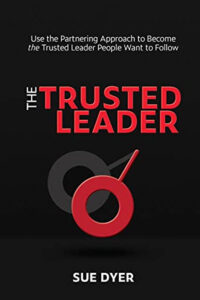
Congratulations.
All of the examples and everything in there is construction-related. It will teach you how to understand and walk you through what you need to do to create the framework in your mind and a framework to follow. It is so that you do daily practices to train your brain by incorporating the intentions and values into what you do every day. At the end of the course, you will do a 30-day Do The Impossible Challenge. You’ll pick one of those things and we will walk through it until you take it from being impossible to possible and from probable to inevitable.
If you’re reading this and you’re like, “I’m not in construction. I won’t service the construction world,” every industry on the planet, the last time I checked, has human beings. What we’re talking about here is how to work better together through interdependency.
The book is written for general business, which is how it got to be Wall Street Journal number two.
You have an offer or giveaway for our audience, is that right?
I do. We’re talking about the continuum of leadership with fear on one side and trust on the other side of the continuum. If you or your team members want to know where you fall along the continuum, you can go to Sudyco.com/Profile. Check that out and see where you fall. You’ll see your trust level. You’ll see your primary style, which is how you are leading. You’ll also get your secondary style, which is how you perceive your leading. Sometimes, there’s a difference between how we think we’re leading and how we are leading. There are five other component parts to that, which you get can all for free, so check it out.
Sue, thank you so much. I’ve enjoyed talking about how we work together. This interdependency is something that I’m passionate about. What the industry needs right now is for us to start trusting each other more and we’re going to do amazing things with that. Thanks for being on the show.
Thank you so much for letting me be here. I hope that we hear some stories of people that began to implement a higher trust atmosphere on their projects or within their businesses.
I hope for that, too. Thanks again.
Thank you.
Important Links
About Sue Dyer
 Sue Dyer, MBA, MIPI is one of the world’s leading experts on trust. She is the author of the Wall Street Journal, USA Today, and Amazon best selling book, The Trusted Leader: Use the Partnering Approach to Become the Leader people Want to Follow. Sue has helped more than 48,000 executive leaders improve their results by building high-trust business cultures. She is called the “godmother of partnering.” Sue coaches leaders to understand their current level of trust, how to train their brain to create a high trust mindset and create a trust strategy for their business.
Sue Dyer, MBA, MIPI is one of the world’s leading experts on trust. She is the author of the Wall Street Journal, USA Today, and Amazon best selling book, The Trusted Leader: Use the Partnering Approach to Become the Leader people Want to Follow. Sue has helped more than 48,000 executive leaders improve their results by building high-trust business cultures. She is called the “godmother of partnering.” Sue coaches leaders to understand their current level of trust, how to train their brain to create a high trust mindset and create a trust strategy for their business.
In 1980, Sue was the first woman in the United States to head up a collective bargaining group and negotiate on behalf of 200 construction companies with the construction unions. Sue worked on over 4,000 construction projects worth over $180 billion to perfect her Partnering Approach model. There have been five university level studies on the efficacy of her model.
Sue and her team have won 73 awards for their work. Her fondest award is Facilitator of the Year from the International Partnering Institute because the team nominated her and wrote that her partnering efforts saved the state $50M. After intervening and facilitating the development of high trust, high preforming teams, Sue now wants to teach leaders how to do this for themselves. That is why she founded sudyco™ LLC. Her mission is to have one million leaders devoted to building their business on a foundation of TRUST. She is committed to helping them make it happen! Sue Dyer – Trusted Leader Programs (sudyco.com)
Love the show? Subscribe, rate, review, and share! https://bluecollarculture.com/podcast/
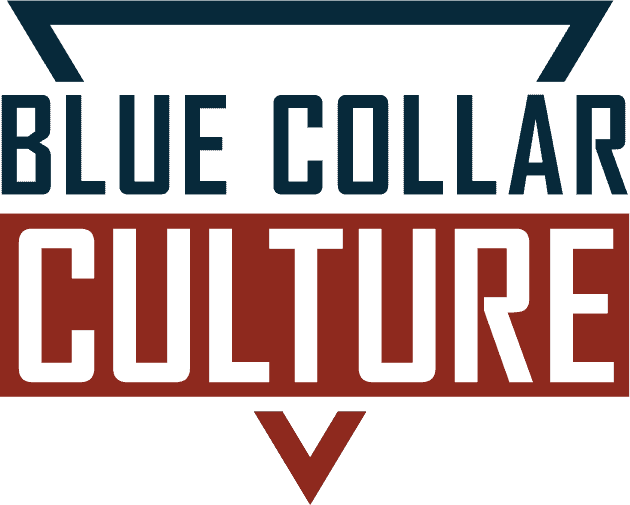





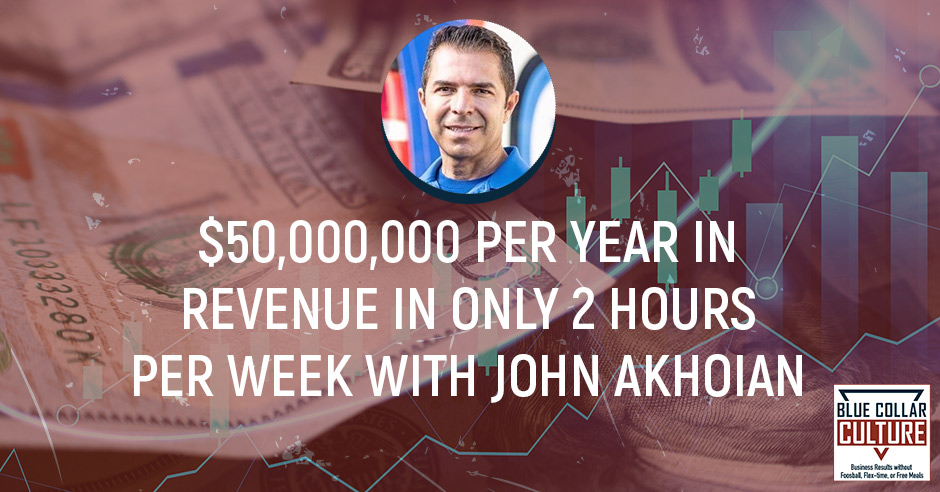




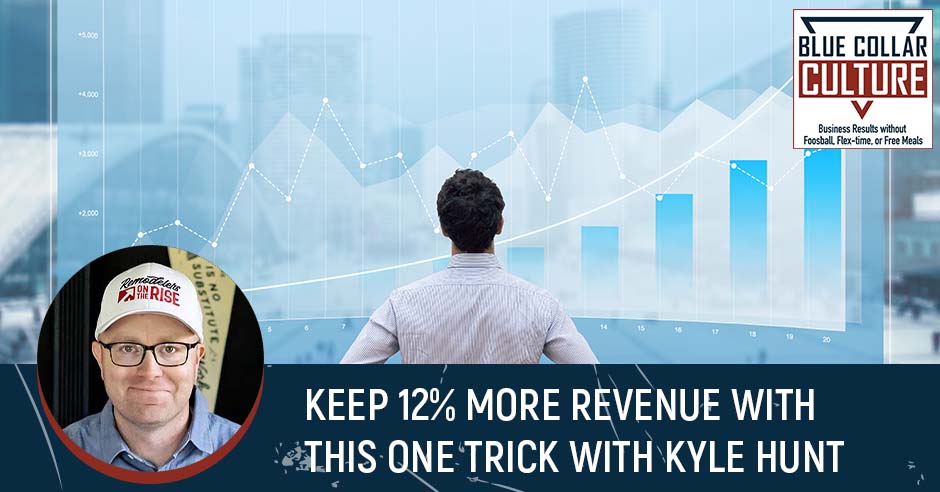



 I’m the owner of Remodelers On The Rise and creator of Remodelers AutoPilot. I work with remodelers to help them transform their sales process, organize their sales pipeline, and automate their follow-up.
I’m the owner of Remodelers On The Rise and creator of Remodelers AutoPilot. I work with remodelers to help them transform their sales process, organize their sales pipeline, and automate their follow-up.




 I’m the CEO of Power Selling Pros, a podcast host, and I have a short course called The Storytelling Habit – it’s where you’ll learn to become a prolific, engaging, and impossible-to-ignore Storyteller.
I’m the CEO of Power Selling Pros, a podcast host, and I have a short course called The Storytelling Habit – it’s where you’ll learn to become a prolific, engaging, and impossible-to-ignore Storyteller.